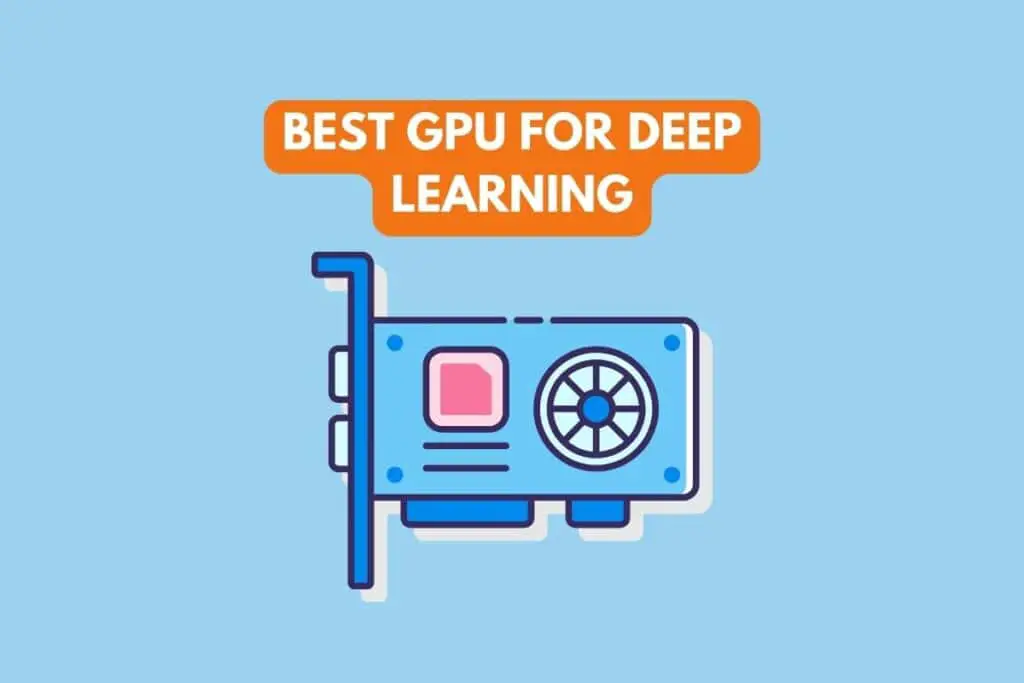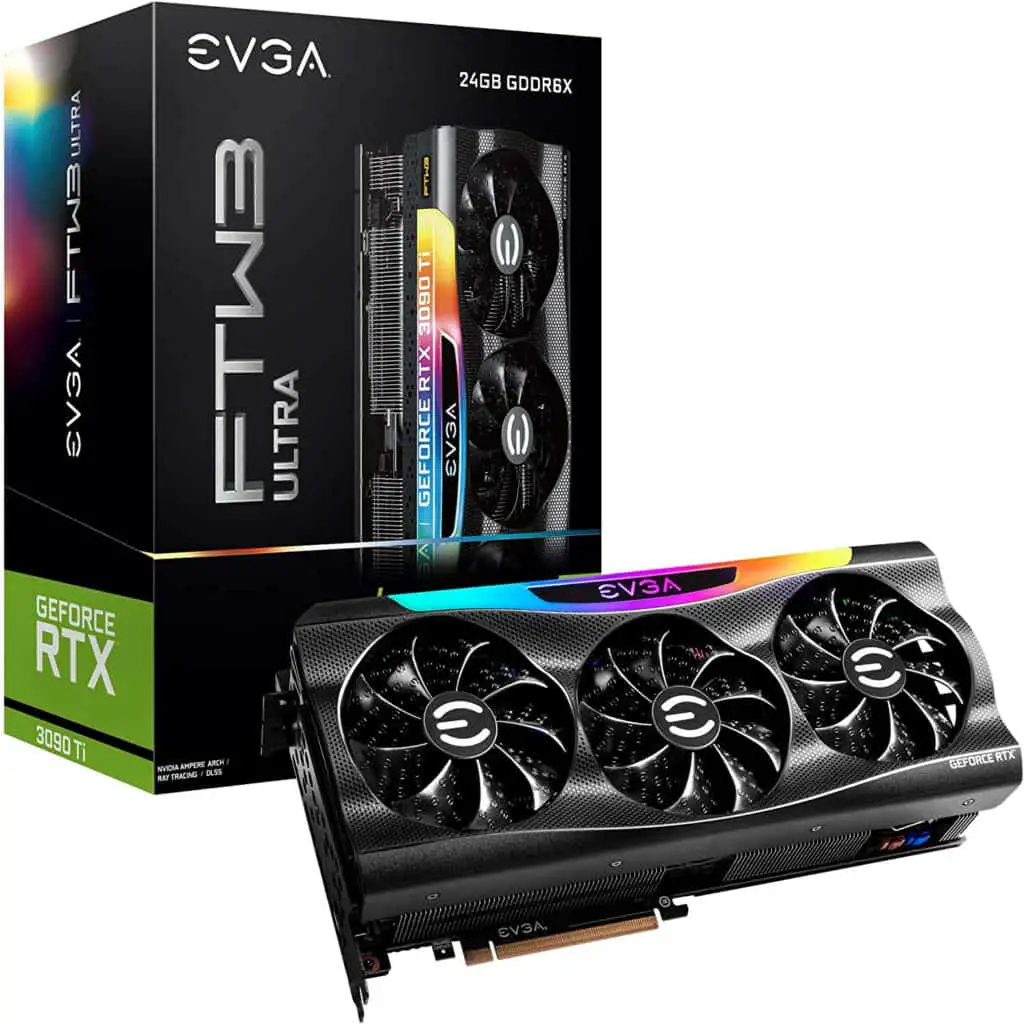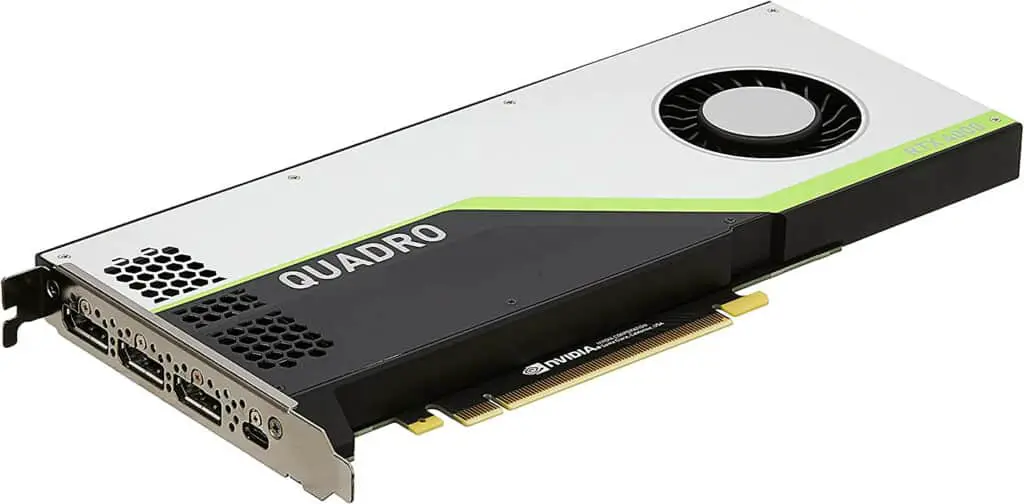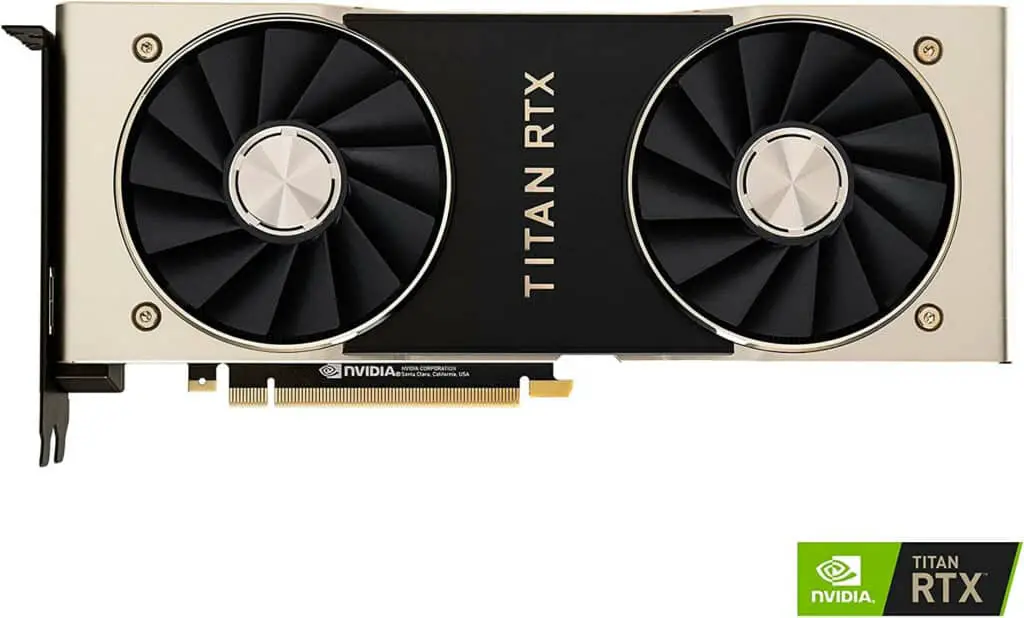This post may contain paid links to my personal recommendations that help to support the site!
Choosing the best graphics processing unit (GPU) for deep learning can be a daunting task. With new GPUs being released every year, it can be hard to keep track of which ones are best for your needs.
In this blog post, we will take a look at 5 of the best GPUs for deep learning in 2023. We will share the technical specifications of each one, as well as their price points and bottom lines.
So whether you are on a budget or looking for the best performance possible, we have you covered!
Let’s get started.
What Are The 5 Best GPUs for Deep Learning & AI in 2023?

Here are the five best GPUs for deep learning and AI in 2023:
- Best Overall: NVIDIA Tesla V100
- Best for Gaming: NVIDIA GeForce RTX 3090 Ti
- Best for Analytics and Machine Learning: NVIDIA Quadro RTX 4000
GPUs have become increasingly important for deep learning and AI applications in recent years. This is due to the fact that they can offer significant speedups over CPUs when it comes to training deep neural networks.
The best GPUs for deep learning will typically be those that offer the best performance per dollar. However, there are also a few other factors to consider, such as memory size and supported features.
With that said, let’s take a closer look at each of the GPUs on our list.
1. NVIDIA Tesla V100

Overview:
The NVIDIA Tesla V100 is the best graphics processing unit for deep learning on the market right now. And that’s because it offers incredible performance for deep learning and AI applications!
With a peak single-precision (FP32) throughput of 14 teraflops and a peak double-precision (FP64) throughput of 7 teraflops. It also features 16 GB of HBM memory, which is more than enough for most deep learning applications.
The only downside of the Tesla V100 is its slightly high price tag, which puts it out of reach for many people.
Technical Features:
- NVIDIA Volta architecture
- GV100 GPU
- 16 GB HBM memory
- 14 teraflops FP32 throughput
- 5120 CUDA cores
- Memory Bandwidth: 900 GB/s
Bottom Line:
The NVIDIA Tesla V100 is the best overall GPU for deep learning available right now. It offers unbeatable performance and features 16 GB of RAM. However, it is also quite expensive.
If you can afford it, the Tesla V100 is the best GPU for deep learning on the market.
2. NVIDIA GeForce RTX 3090 Ti

Overview:
The next on my list of the best GPUs for deep learning is the NVIDIA GeForce RTX 3090 Ti!
This is a high-end gaming GPU that can also be used for deep learning. It has a peak single-precision (FP32) throughput of 13 teraflops, features 24 GB of GDDR memory, and has 10752 CUDA cores, making it one of the most powerful GPUs on this list.
I would say that this combination of technical specifications just can’t be ignored!
Technical Features:
- NVIDIA Ampere architecture
- PCI Express Gen 4
- 24 GB GDDR memory
- 13 teraflops FP32 throughput
- 10752 CUDA cores
- Memory Bandwidth: 1008 GB/s
Bottom Line:
Although made for gaming, NVIDIA GeForce RTX 3090 Ti has sufficient performance and processing power to run all your deep learning models! This would be the second best GPU for deep learning if you’re an individual data scientist who runs deep learning tasks on your machine.
The pricing of this GPU is also more reasonable for first-time data scientists who are looking to try out deep learning. Overall, the NVIDIA GeForce RTX 3090 Ti has a good balance of GPU performance, GPU memory bandwidth, and cost-effectiveness.
3. NVIDIA Quadro RTX 4000

Overview:
Up next, we have the NVIDIA Quadro RTX 4000, which offers real-time ray tracing in a single slot form factor and uses the Turing architecture. This GPU was built with machine learning and data analytics in mind – it has tensor cores to speed up your processing time for your deep learning model training.
The RTX 4000 has a peak single-precision (FP32) throughput of 11 teraflops and comes with 8GB of GDDR memory.
Technical Features:
- Turing architecture
- 8GB GDDR memory
- 7.1 teraflops FP32 throughput
- 2304 CUDA cores
- Memory Bandwidth: Up to 416 GB/s
Bottom Line:
The NVIDIA Quadro RTX 4000 is best for data analytics and machine learning due to the tensor cores that are included in the architecture and if you’re on a budget.
This makes it a good option if your machine learning applications are on the lighter side. The tensor cores do make up for the lower performance of this GPU! This is the best GPU for small projects in deep learning and AI.
However, if your deep learning tasks are computing-intensive, I would recommend one of the other GPUs on this list as the RTX 4000 falls a bit short in terms of its FP32 throughput, memory, and bandwidth.
4. NVIDIA Titan RTX

Overview:
If you’re looking for the best GPU for deep learning that money can buy, then look no further than the NVIDIA Titan RTX.
This is a high-end gaming GPU that’s also great for deep learning tasks. It has a peak single-precision (FP32) throughput of 16 teraflops and comes with 24 GB of GDDR memory. It also has 576 Tensor Cores and 4608 CUDA cores!
Technical Features:
- Turing architecture
- 24GB GDDR memory
- 16 teraflops FP32 throughput
- 13,200 CUDA cores
- Memory Bandwidth: Up to 688 GB/s
Bottom Line:
The NVIDIA Titan RTX is another GPU for deep learning that has an overall balanced offering. Built for AI researchers and data scientists, this GPU offers unbeatable performance and features 24 GB of RAM.
However, it is also one of the more expensive options on this list.
5. NVIDIA RTX A5000

Overview:
The NVIDIA RTX A5000 is a professional graphics card that’s built on the latest Ampere architecture. With options to connect multiple GPUs of RTX A5000s, you’ll have no problems scaling your performance and memory needed for your deep learning and machine learning tasks. It’s best suited for deep learning, data analytics, and scientific computing applications.
This GPU has a peak single-precision (FP32) throughput of 27.8 teraflops and comes with 24 GB of GDDR memory. It also has a whopping large number of 8192 CUDA cores and 256 NVIDIA third-generation Tensor Cores!
Technical Features:
- Ampere architecture
- 24 GB GDDR GPU memory
- 27.8 teraflops FP32 throughput
- 256 NVIDIA third-generation Ampere Tensor Cores
- 8192 CUDA cores
- Memory Bandwidth: Up to 768 GB/s
Bottom Line:
The NVIDIA RTX A5000 is the best GPU for deep learning if you’re willing to spend money on a high-performance computing setup for deep learning workstations.
With options to scale through the use of multiple GPUs, the NVIDIA RTX A5000 is built for scaling AI solutions. It offers great performance with its 32 GB of RAM and 13 teraflops of FP32 throughput, which helps to back up the deep learning performance.
However, being an expensive option, if you’re not looking for high-end deep learning GPUs for scaling your deep learning tasks, you can consider skipping this.
Related Questions
What GPU is good for deep learning?
The NVIDIA Tesla V100 is good for deep learning. It has a peak single-precision (FP32) throughput of 15.0 teraflops and comes with 16 GB of HBM memory.
What is the best budget GPU for deep learning?
The best budget GPU for deep learning is the NVIDIA Quadro RTX 4000. It has a good balance between cost and performance. It is best suited for small projects in deep learning and AI.
What is the best GPU for machine learning?
The best GPU for machine learning is the NVIDIA Tesla V100. It has a peak single-precision (FP32) throughput of 15.0 teraflops and comes with 16 GB of HBM memory. It also has 640 Tensor Cores.
Is RTX 3080 enough for deep learning?
The RTX 3080 is good for deep learning. It has a peak single-precision (FP32) throughput of 19.0 teraflops and comes with 24 GB of GDDR memory. It also has 320 Tensor Cores which can be useful for deep learning applications. However, the GPU is originally built for gaming.
Does GPU matter for deep learning?
GPUs are important for deep learning because they offer good performance and memory for training deep neural networks. GPUs can help to speed up the training process by orders of magnitude.
What is the best GPU for TensorFlow?
The best GPU for TensorFlow is the NVIDIA Tesla V100. It has a peak single-precision (FP32) throughput of 14 teraflops and comes with 16 GB of HBM memory. It also has 640 Tensor Cores. The Tensor Cores help accelerate deep learning model training on TensorFlow.
How much GPU is enough for deep learning?
For deep learning, you will need a powerful GPU with a good performance of 15 teraflops and 8-16 GB memory. A good starting point is the NVIDIA Tesla V100 which has a peak single-precision (FP32) throughput of 14 teraflops and comes with 16 GB of HBM memory.
For deep learning purposes, you’ll need to get one with the NVIDIA Deep Learning SDK for more accelerated GPU tasks.
How Do You Choose a GPU for Deep Learning?
When choosing a GPU for deep learning, you need to consider the performance, memory, and budget. A good starting point is the NVIDIA Tesla V100 which has a peak single-precision (FP32) throughput of 14 teraflops and comes with 16 GB of HBM memory.
For a budget option, the best GPU is the NVIDIA Quadro RTX 4000 which has a good balance between cost and performance. It is best suited for small projects in deep learning and AI.
Final Words
Alright, that’s all the best GPUs for deep learning and AI! I hope this article has been helpful in getting a GPU for your deep learning work.
Thanks for reading!
